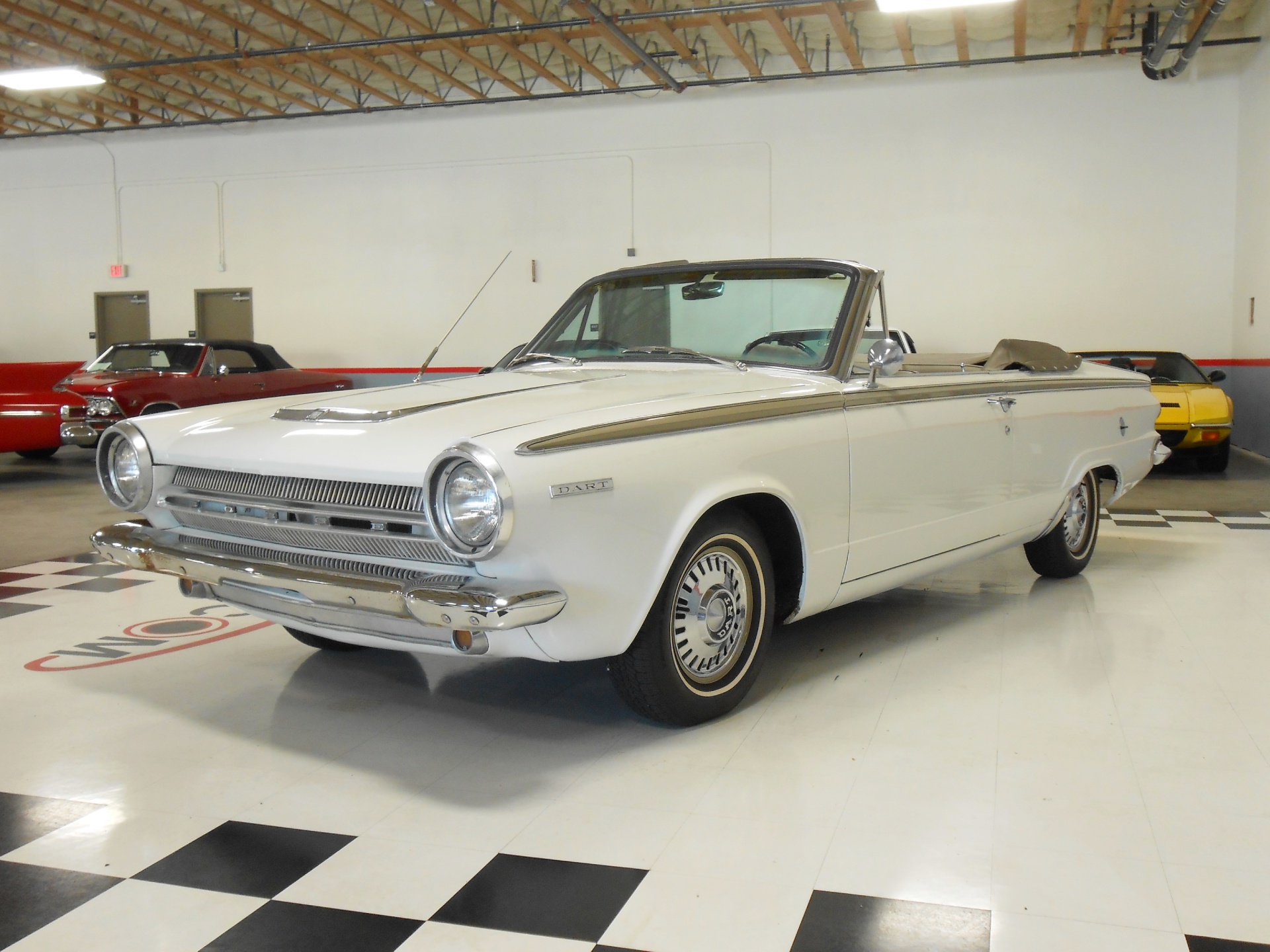


Otherwise, they looked substantially closer related, with their refrigerator boxiness. The gap was thus narrowed down to 3″, and it wasn’t quite so obvious anymore, unless you knew where to look. The major 1967 re-style for both of the A-Bodies in 1967 gave the Valiant two extra inches in wheelbase, but the Dart stood pat with its 111″. Niedermeyer’s drive to Johns Hopkins Hospital every day, where the cafeteria there had his beloved baloney sandwich awaiting him for lunch. Leave it to hardcore cheapskates like my Dad to drive a Dart with the 170 and three-on-the-tree Dr. And for 1964, the new 273 CID LA V8 was also optional, rated at 180 hp. Most automatic Darts, especially with anything other than stripper trim level, tended to come with the 225, which made a much more harmonious package with the automatic than the 170. The 170 CID slant six with 101 (gross) hp was standard in the Dart, but I’ll make a substantial wager that this one is packing the optional 225 inch version (145 hp). We did a CC on a mighty hot one of those here.

Of course there was a model above the 270, but in that sporty era, that would be the GT. Consider it the pre-Brougham era Brougham of Darts. That tufted rear seat upholstery was thanks to this being the top-tier 270 model. In 1963, the Torqueflite push-buttons were making their farewell appearance here. The front was valiant but not very successful effort to distinguish itself from its slightly cheaper Plymouth stablemate. The Dart was to the Valiant what the Comet was to the Falcon it was a successful strategy for Ford, so why not repeat it? It certainly was generous for a so-called compact, which with 111″ wheelbase was stretching the term a bit. That played itself out in rear seat legroom, which was…5″ longer, I presume. The wagons shared the same 106.5″ wheelbase, but the Dart sedan was decidedly stretched out back there. The Valiant sat on a 106″ wheelbase, while the Dart had an extra 5″, all of it right behind the rear door, as is rather obvious. Of course there’s obvious family similarities with the rather cleaner and tidier ’63 Valiant ( CC here), but the stylists did a pretty effective job of differentiating the two. The main differences were a different grille, and some trim changes. Our featured Dart is a 1964, but it was only subtly restyled from the 1963. And although they eventually ended up looking almost indistinguishable from each other, they didn’t start out that way. The real Dart started in 1963, when it and the Valiant got a major fare-well restyle by Virgil Exner, and went on to eventually dominate the compact class with its stablemate. Even those of us who were around in the first Dart incarnation, the full-size low-end ugly space ships from 1960-1961, have largely repressed them. This still makes us sad, though.(First Posted October 22, 2013) What really separates the hard core car freaks from the semi-pros is in what mental image they conjure up when you say “early Dodge Dart”. The Crusher, for reasons that make good economic sense. So another early Dart is poised to be stuffed into This one has a lot of rust for a California car (in New Hampshire or Wisconsin, it would be considered pretty solid) and the interior is more or less obliterated, so even dedicated station-wagon lovers wouldn't have been motivated to take it on as a restoration project. In any case, slant-6 Darts were on the pokey side but would get you to your destination every time. Gross horsepower (probably about 55 horses at the wheels), but I didn't feel like scraping sludge off casting numbers to see if it's on its first or 11th engine. This car would have come with a 170- or 225-cubic-inch version of the slant-6, optimistically rated at either 101 or 145 Slant-6 engine, though less powerful, went into most of these cars, and for good reason: It was harder to kill than all the world's cockroaches and rats put together. '64 Dart wagon that I spotted in a self-service wrecking yard in San Jose, California.ġ964 was the first model year for factory-installed V8 engines in theĭart and Valiant (and the Valiant's sporty sibling, the Barracuda), and theĢ73-cubic-inch pushrod V8 was a sturdy powerplant indeed.

We know these cars best as theġ960-1976 Plymouth Valiant, and they established a reputation for reliability matched only by the likes of the Chrysler A Platform, built from the 1960 through 1976 model years for the North American market (and for a few years beyond that in


 0 kommentar(er)
0 kommentar(er)
